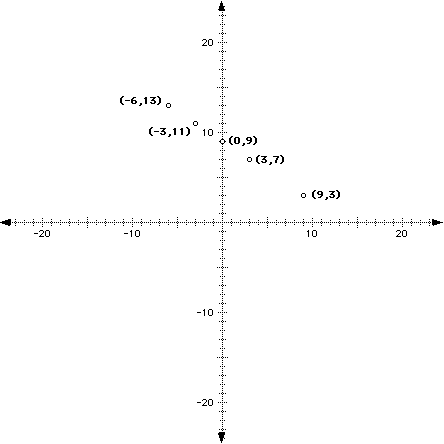

ABSCISSA DEFINE SERIES
Hardy and Riesz, for instance, give as an example on page 9 the series $\Sigma (-1)^n (\log n)^+s=s,$$ One of the elements of reference by which a point, as of a curve, is referred to a system of fixed rectilineal coordinate axes. The situation is much more subtle in the context of Dirichlet series, however-a power series converges absolutely or diverges except possibly on a subset of a single circle, where it may converge conditionally (I think though that that subset can be quite complicated) a Dirichlet series, on the other hand, may converge conditionally (and not absolutely) on a strip or even on the entire plane. One of the elements of reference by which a point, as of a curve, is referred to a system of fixed rectilineal coordinate axes. It is the distance from the y -axis measured parallel to the x -axisCompare ordinate. Basically, this formula is an analogue of the root test for the convergence of a power series (in fact, in the case $\lambda_n = n$ the two tests coincide). noun plural -scissas or -scissae (-ssi) the horizontal or x -coordinate of a point in a two-dimensional system of Cartesian coordinates.

Here are a few remarks (mostly paraphrasing that book) to clarify the import of these formulas for other people who stumble across this question and wonder about its motivation. Meaning, pronunciation, translations and. It is the first of the two terms (often labelled x and y) which define the location of a point in such a coordinate system. Axes of graph showing normal distribution curve. In mathematics, abscissa (plural abscissae or absciss) refers to that element of an ordered pair which is plotted on the horizontal axis of a two-dimensional Cartesian coordinate system, as opposed to the ordinate. Riesz's The General Theory of Dirichlet's Series. Abscissa definition: the horizontal or x -coordinate of a point in a two-dimensional system of Cartesian. abscissa ab-sisah the horizontal line in a graph along which are plotted the units of one of the variables considered in the study, as time in a time-temperature study. As I mentioned in a comment, this proof is a simple application of ideas found on page 7 of Hardy & M. Here is a proof of the remaining inequality (the one not proved in your answer, ireallydonknow). of abscissus 'cut off,' past participle of abscindere 'to cut off, divide, part, separate,' from ab 'off, away from' (see ab-) + scindere 'to cut, rend, tear asunder, split. Please remember to mark the replies as answers if they help and unmark them if they provide no help, this will help others who are looking for solutions to the same or similar problem. I apologize for the delay in writing this up. abscissa (n.) 1798 in Latin form, earlier Englished as abscisse (1690s), from Latin abscissa, short for abscissa (linea) '(a line) cut off,' or (recta ex diametro) abscissa '(a line) cut off (from the diameter),' fem. abscissa n pl, -scissas, -scissae the horizontal or x-coordinate of a point in a two-dimensional system of Cartesian coordinates.


 0 kommentar(er)
0 kommentar(er)
